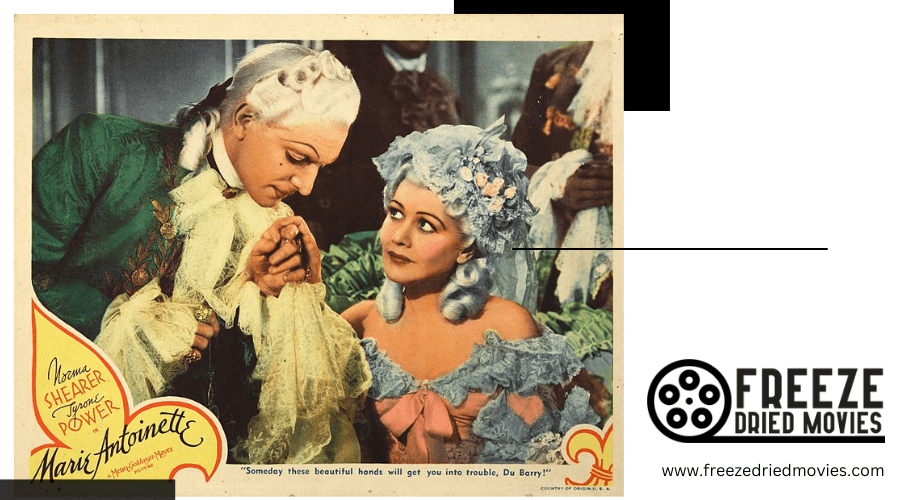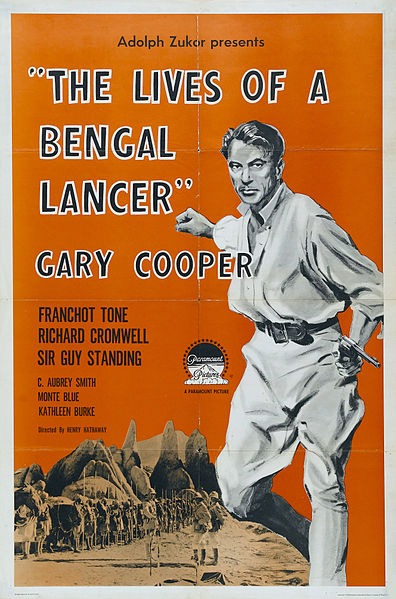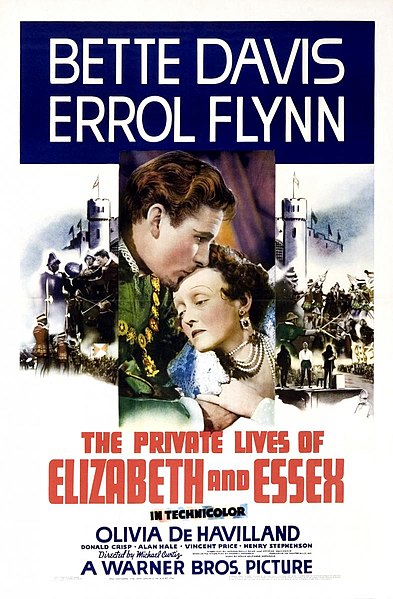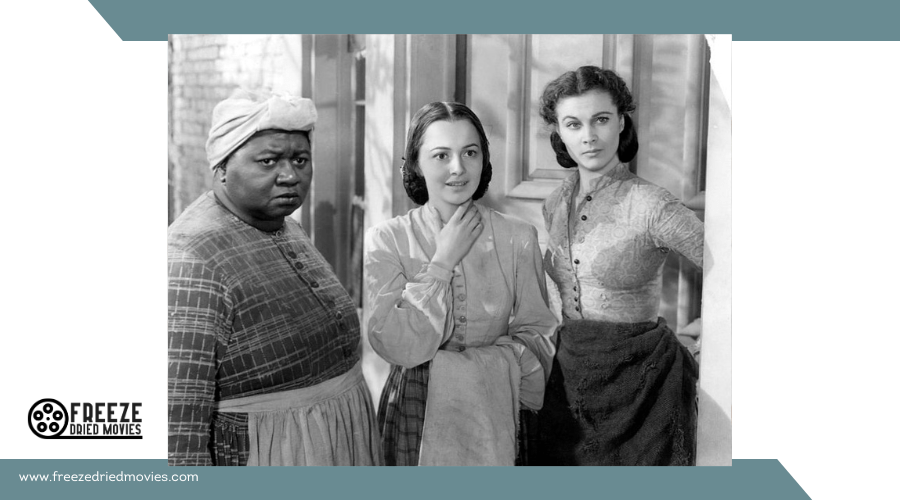The Top 1930s Historical Dramas: Cinema's Take on the Past

When considering the top historical dramas of the 1930s, it's clear they do more than entertain; they educate and provoke thought. Films such as "Marie Antoinette" and "The Adventures of Robin Hood" offer more than just lavish costumes and grand sets. They delve into complex power dynamics, social issues, and moral dilemmas that remain relevant today. These movies set a high standard for narrative depth and production quality, paving the way for future historical films. Remarkably, these films also reflect the societal concerns of their era, prompting us to question how history is influenced by its narrators.
Overview of 1930s Historical Dramas
In the 1930s, historical dramas captivated audiences by bringing significant events and iconic figures to life on the big screen. These films didn't just entertain; they educated, blending drama and accuracy to make history accessible to the masses. With a total of 193 historical drama films during this decade, the genre examined important historical events and figures, reflecting the period's fascination with the past.
These dramas often explored power dynamics and social issues like class and gender, presenting them in a compelling and thought-provoking manner. Movies like "Marie Antoinette" (1938) offered a glimpse into the opulent yet tragic life of the French queen, while "The Four Feathers" (1939) tackled themes of honor and courage.
The 1930s historical drama genre set a template for future films, influencing narrative structures and popularizing period pieces in Hollywood. Its legacy is still evident today, as modern cinema continues to draw from these early works. By watching these films, you gain not only entertainment but also a deeper understanding of history through masterful storytelling.
Iconic Films of the 1930s
During the 1930s, Hollywood produced a series of iconic historical dramas that not only entertained but also offered profound insights into different periods and cultures. One standout is "Marie Antoinette" (1938), which brought to life the opulence and turmoil of the French queen's existence amid the French Revolution. This film captured the tragic downfall of royalty, making history accessible and enthralling.
In "The Lives of a Bengal Lancer" (1935), audiences are taken into the heart of British colonial India, exploring themes of heroism and the moral complexities of imperialism. This gripping portrayal of duty and camaraderie is set against a backdrop of political tension.
"The Four Feathers" (1939) delves into the British Army's campaigns in Sudan, focusing on themes like honor and courage. The narrative compellingly explores personal bravery clashing with societal expectations, making it timeless.
"The Private Lives of Elizabeth and Essex" (1939) offers a glimpse into the power dynamics and romance between Queen Elizabeth I and the Earl of Essex, blending historical accuracy with dramatic flair.
Lastly, "The Adventures of Robin Hood" (1938) reimagines English folklore, highlighting social justice and class struggles in medieval England. These historical dramas from the 1930s continue to resonate, reflecting the era's fascination with the past.

Recurring Themes
When you watch 1930s historical dramas, you often encounter themes of power and social dynamics that highlight the contrasts between social classes and the influence of authority figures. These films also delve into the harsh realities of war and the personal sacrifices involved, showcasing the emotional and societal upheavals that follow. Through these recurring themes, you gain insight into the struggles and moral dilemmas faced by individuals during turbulent times.
Power and Social Dynamics
Historical dramas of the 1930s often explored the intricate dance of power and social dynamics. Films like *The Four Feathers* highlight power dynamics within a colonial framework, delving into the struggles between different social classes. Themes of honor and courage are used to spotlight how power influences personal and societal relationships.
In *Marie Antoinette* (1938), the complexities of power are evident through the portrayal of historical figures, examining how power impacts personal lives amid societal upheaval. The film reveals the nuanced burdens carried by those in authority.
Moral dilemmas faced by characters in positions of power are another recurring theme. *The Private Lives of Elizabeth and Essex* (1939) reflects the tension between personal integrity and societal expectations, investigating how leaders navigate their responsibilities and personal desires.
Gender roles also play a significant part in these dramas. *The Lives of a Bengal Lancer* (1935) examines the intersections of power, colonialism, and gender, showcasing the evolving independence of women.
The consequences of war often frame these narratives, altering societal structures and highlighting shifts in social dynamics, as depicted in *The Grand Illusion* (1937).
War and Personal Sacrifice
Historical dramas of the 1930s frequently explore themes of war and personal sacrifice, vividly portraying the emotional and moral costs of conflict. In "The Four Feathers" (1939), characters face profound personal sacrifices against the backdrop of war, wrestling with their own fears and societal expectations, thus embodying the era's complex views on heroism.
"The Lives of a Bengal Lancer" (1935) delves into the intricacies of military duty and loyalty, illustrating the sacrifices soldiers make as they balance personal desires with the harsh demands of war, reflecting societal pressure to uphold heroism during turbulent times.

In "Marie Antoinette" (1938), the protagonist's personal sacrifices are intertwined with national turmoil. Her choices carry significant consequences, showcasing the heavy emotional toll and moral dilemmas faced during historical upheavals.
"All Quiet on the Western Front" (1930) starkly highlights the tragic costs of conflict, immersing viewers in the personal struggles of soldiers. "The Private Lives of Elizabeth and Essex" (1939) blends political intrigue with intimate struggles, emphasizing how personal sacrifice amid war impacts both public and private spheres.
Industry Impact
The 1930s historical dramas had a profound influence on the film industry, setting the stage for future productions by establishing foundational narrative structures and character development techniques. The craftsmanship of these films can still be seen in the historical dramas of today.
During the 1930s, the popularity of these films created a significant demand for period pieces, shaping Hollywood's production trends and fostering an ongoing fascination with the genre.
Key impacts of 1930s historical dramas include:
- Enhanced costume design and set production, showcasing historical accuracy and grandeur.
- Political commentary, reflecting the social and political contexts of the time and resonating with contemporary audiences.
- Innovative storytelling techniques to navigate the constraints of the Motion Picture Production Code.
- Influencing future Hollywood productions through the sustained demand for historical dramas.
These films transcended mere entertainment, serving as a platform for reflection, creativity, and driving industry-wide trends.
Cultural Legacy
The cultural legacy of 1930s historical dramas is undeniable, as they have profoundly influenced our perception of history and narrative techniques. These films introduced iconic characters and employed storytelling methods that continue to shape modern cinema. By making historical events engaging and accessible, they have ensured that their narratives remain relevant and impactful today.
Lasting Historical Influence
The 1930s historical dramas left a lasting impact on cinema and cultural understanding. Films like "The Lives of a Bengal Lancer" and "Marie Antoinette" set a precedent for future historical narratives by blending dramatic storytelling with elements of historical accuracy. Their influence is evident in how they:
- Raised awareness of significant historical events and figures
- Contributed to cultural education and historical understanding
- Romanticized history, affecting public perception
- Established standards for costume design and set production
These films did more than entertain; they educated audiences about major historical events, though often through a romanticized lens. They created a template that modern cinema still follows, focusing on themes like power dynamics, personal sacrifice, and social issues. The legacy of these 1930s historical dramas is evident today in the way filmmakers approach period pieces. The meticulous attention to detail in costume design and set production set high standards that continue to be admired and emulated. These early films shaped the way we visualize and understand history, even if they sometimes prioritized narrative appeal over strict factual accuracy.
Iconic Characters Remembered
As we consider the cultural legacy of iconic characters from 1930s historical dramas, it becomes evident how profoundly these figures have shaped popular imagination. Robin Hood from "The Adventures of Robin Hood" (1938) stands out as a timeless symbol of heroism and rebellion. His fight against tyranny continues to resonate with audiences, making him an enduring cultural icon.
Marie Antoinette, as portrayed in the 1938 film, embodies the complexities of historical figures caught in tumultuous times. Her depiction oscillates between sympathy and criticism, reflecting the public's fascination with her luxurious yet tragic life during the French Revolution.
Elizabeth I, in "The Private Lives of Elizabeth and Essex" (1939), remains a powerful figure representing female authority and personal sacrifice. Her character underscores the challenges faced by women in positions of power within a male-dominated society.

The British soldier in "The Lives of a Bengal Lancer" (1935) epitomizes the romanticized view of British imperialism, while characters in "The Four Feathers" (1939) highlight themes of honor and courage, grappling with moral dilemmas during wartime. These iconic characters from 1930s historical dramas continue to shape our understanding of history and heroism.
Timeless Storytelling Techniques
The 1930s historical dramas established enduring storytelling techniques that continue to influence modern cinema. Filmmakers of that era created a narrative template that emphasized character development and moral dilemmas, setting the stage for future explorations of complex human emotions and ethical conflicts.
These filmmakers employed various methods to engage audiences in historical settings. Rich costume design and detailed set production transported viewers back in time, making the historical context almost palpable. This attention to detail not only drew people into the story but also set a standard for authenticity in film history.
Moreover, these dramas often intertwined social commentary with their narratives, reflecting contemporary issues such as class struggle and gender roles. This blend of drama and social critique enriched the stories, making them more relatable and thought-provoking.
Iconic films like "Marie Antoinette" and "The Lives of a Bengal Lancer" showcased the power of historical dramas to romanticize and reinterpret significant events and figures. Their legacy includes inspiring modern remakes and adaptations, demonstrating the lasting impact of these storytelling techniques.
Key elements of these timeless techniques include:
- Emphasis on character development and moral dilemmas
- Rich costume design and set production
- Blend of drama and social commentary
- Iconic films that romanticize and reinterpret history
Influential Directors and Stars
Exploring 1930s historical dramas reveals a rich tapestry of influential directors and stars who left an indelible mark on the genre. William Wyler and Jean Renoir stand out with their masterful storytelling. Wyler's "Wuthering Heights" (1939) and Renoir's "The Grand Illusion" (1937) exemplify their distinctive approaches to bringing historical narratives to life.
The Marx Brothers, known for their comedic genius, also infused historical contexts with humor. Their film "A Night at the Opera" (1935) demonstrated how comedy could be seamlessly integrated into historical settings, providing a unique take on the genre.
Here's a snapshot of these influential figures:
| Director/Star | Notable Work |
|---|---|
| William Wyler | "Wuthering Heights" (1939) |
| Jean Renoir | "The Grand Illusion" (1937) |
| Bette Davis | "The Private Lives of Elizabeth and Essex" (1939) |
| Errol Flynn | "The Adventures of Robin Hood" (1938) |
| Clark Gable | "Gone With the Wind" (1939) |
Bette Davis emerged as a leading star, showcasing her range in "The Private Lives of Elizabeth and Essex" (1939). Meanwhile, Errol Flynn's swashbuckling charisma in "The Adventures of Robin Hood" (1938) made him an icon. And who can forget Clark Gable in "Gone With the Wind" (1939), a performance that cemented his legacy in historical cinema?




